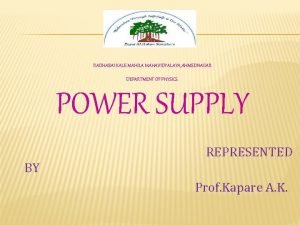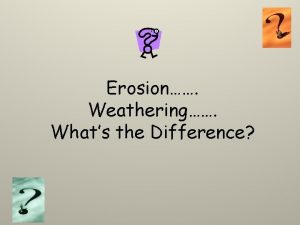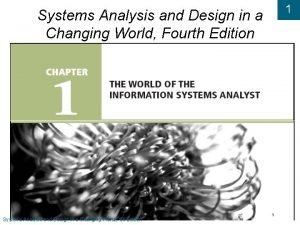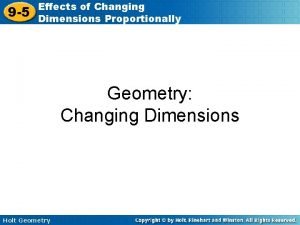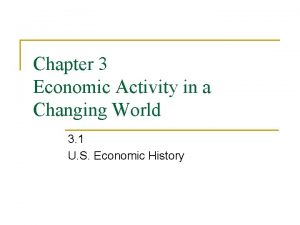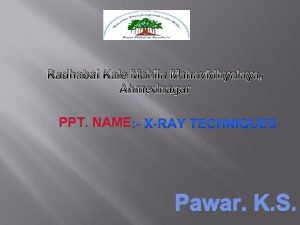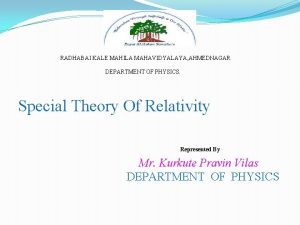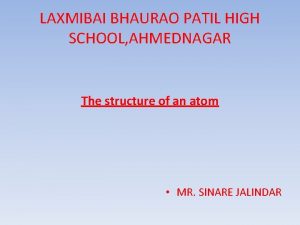CHANGING FAMILES URCDMSWSemesterII CSRDISWR Ahmednagar WHAT IS FAMILY










- Slides: 10

CHANGING FAMILES URCD-MSW-Semester-II CSRD-ISWR, Ahmednagar

WHAT IS FAMILY? • Family is a universal primary social institution. It functions as a social, biological and economic unit and therefore it has a prime place in human society. • “Family is a group defined by sex relationship sufficiently precise and enduring to provide for the procreation and upbringing of children”- Mac. Iver. • “Family is a more or less durable association of husband wife with or without children, or a man or woman alone with children”- Nimkoff.

WHAT IS FAMILY? • “A domestic group of two or more people united by bonds of blood, adoption or marriage" (U. S. Bureau of Census 1990). • "Families live together; share economic resources; act as cooperative, caring social units; and provide environments for the emotional, social and economic well being of family members. Janet Bokemeier (1997), president of the Rural Sociology Society,

FUNCTIONS OF FAMILY • Fulfils sexual and reproductive urges. • Provides physical necessities for upbringing of children. • Provides affectionate and intimate relationships. • Serves as an effective agency of socialization. • Acts as an important agency of social control. • Determines initial status of its members. • Organizes and transmits assets.

CHANGES IN TRADITIONAL FAMILY SYSTEM • • The rise in the number of single member household, Break-down of traditional joint family system, Increase in cases of divorce, Individual male migration to cities for work, Erosion of authority of patriarch, The attrition of traditional family values, Increase in the number of working mothers in cities and single parents, • Rise in domestic violence and practices of dowry, • Neglect of children and elderly, • poor regard for family laws

FEW MORE REASONS • The virtual disappearance of traditional joint family from the urban scene, • Increase in the life expectancy of women from 23 years in 1901 -10 to 65 years (it is higher than that of men by three years) in 2009, • Rise in the proportion of female headed households, • Decrease in the average of household heads, • Increase in the incidence of separation and divorce, • Greater tension and conflicts between wife and husband, • Parents and sons and between brothers, • Increased freedom of marital choice,

FEW MORE REASONS • shrinking of kinship ties, • continuous consultations between sons and parents on familial matters, greater involvement of females in decision making process, • increase in the mean age at marriage of female from 13 years • in 1901 to 18. 3 years in 2001, • rise in the level of female education, • decline in total fertility rate from 4. 9 in 1971 to 2. 76 in 2009 are concrete and clinching evidence to suggest a whole range of changes in the family system— its structure, functions, core values and regulative norms (Singh, 2004: 129 -166).

THE PASSING OF JOINT FAMILY SYSTEM • The nuclear family, same as elsewhere, is now the characteristic feature of the Indian society. According to the census of India data, of all the households nuclear family constituted 70 percent and single member or more than one member households without spouse (or eroded families) comprised about 11 percent. The extended and joint family or households together claim merely 20 percent of all households. This is the overall picture about the entire country, whereas in the case of urban areas the proportion of nuclear family is somewhat higher still.

• THE PASSING OF JOINT The available data from the National. FAMILY Family and SYSTEM Health Survey -1 of 1992 -93 (henceforth NFHS) suggest that joint family does not make up more than five percent of all families in urban areas (Singh, 2004: 137). An extended family, which includes a couple with married sons or daughters and their spouses as well as household head without spouse but with at least two married sons, daughters and their spouses, constitute a little less than one fifth of the total households. • The emergence of financially independent, career-oriented men and women, who are confident of taking their own decisions and crave to have a sense of individual achievement, has greatly contributed to the disintegration of joint family. Disintegration of joint family has led to closer bonds between spouses, but the reverse is also true in certain cases. For many, nuclear family is a safer matrimonial home to a woman.

CHANGES IN AUTHORITY STRUCTURE Yet another interesting fact about the change in authority structure within the family is that about nine percent of all the households are headed by women, while the NFH Survey-1 (1995: 46) gives a slightly higher figure (about 10 percent). Most of the female household heads are usually independent and gainfully employed. In the absence of their husbands, either because of death, separation, transfer in job or business engagement, women are themselves able to run the affairs of their family. Long distance migration of men for employment is also an important reason for the emergence of such households. The phenomenon of female-headed household assumes significance in the Indian society because in the past when the joint family system was so preponderant that the female headed household was quite an uncommon phenomenon
 Mount litera zee school ahmednagar
Mount litera zee school ahmednagar Snehalaya english medium school ahmednagar
Snehalaya english medium school ahmednagar Radhabai kale mahila mahavidyalaya ahmednagar
Radhabai kale mahila mahavidyalaya ahmednagar Difference between nuclear family and joint family
Difference between nuclear family and joint family Carbon family
Carbon family Characteristics of single parent family
Characteristics of single parent family Whats mechanical weathering
Whats mechanical weathering Effects of changing dimensions on surface area and volume
Effects of changing dimensions on surface area and volume Systems analysis and design in a changing world
Systems analysis and design in a changing world Changing dimensions geometry
Changing dimensions geometry Chapter 3 economic activity in a changing world
Chapter 3 economic activity in a changing world


